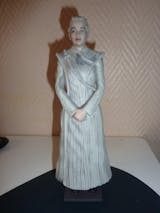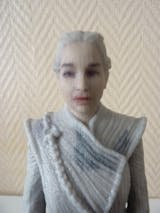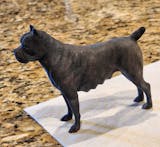Avatar Optimization Tips: Reduce Lag Without Losing Quality in VTuber Streams
Let’s be real, nobody wants to see a VTuber model freeze mid-expression or glitch through their chair. Yet, lag is one of the most common issues even seasoned VTubers face during streams. The good news? You don’t need to sacrifice your avatar’s quality just to maintain performance.

Whether you're working with a high-detail 3D avatar or a slick 2D model, optimizing your setup can help you deliver smooth, immersive content without compromising your VTuber identity. In this guide, we’ll break down practical, beginner-friendly optimization tips that keep your VTuber stream running smoothly while your character stays crisp and responsive.
Why Avatar Optimization Matters for VTuber Streams?
Your avatar is the face of your content. It’s your streaming identity, visual personality, and first impression all rolled into one. But none of that matters if your VTuber streams stutter or crash mid-scene. Avatar lag can ruin viewer experience—and worse, drain your motivation to show up consistently. If you want to deliver smooth, professional VTuber streams, it starts with knowing what’s slowing you down.
Common culprits behind laggy VTubing include:
- High polygon count in 3D models.
- Overloaded Live2D physics systems
- Unoptimized textures, bones, or parameters
- Tracking software overkill
- Streaming too high a resolution or bitrate
Whether you're using VTube Studio, Luppet, or PrprLive, most VTuber stream setups can benefit from smart adjustments.
2D Avatar Optimization Tips (Live2D)
Make your Live2D avatar run smoother by cutting down on extra movement, using fewer parts, and keeping expressions simple.
1. Simplify Physics Parameters
Live2D avatars often become laggy due to excessive physics. If your character’s hair, earrings, and clothing all move independently, it can strain performance.
What to do:
- In Cubism Editor, remove unused physics groups.
- Simplify or reduce the number of dynamic movements per part.
- Use “low” or “medium” physics settings in VTube Studio for smoother tracking.
Pro Tip: Most viewers won’t notice if a third hair strand doesn’t bounce perfectly; they will notice if your stream freezes.
2. Limit Drawable Parts
Every piece of art separated in your Live2D file adds load. You don’t need to separate every eyelash, sparkle, and sock wrinkle.
Optimize by:
- Merging similar or static parts in your PSD (before import).
- Avoid excessive mesh subdivisions unless deformation is essential.
- Reusing assets (e.g., mirrored eyes or accessories) when possible.
3. Keep Expression Toggles Efficient
VTube Studio supports hotkey expressions, but loading 20+ complex toggles can tax your software.
Stick to:
- 5 - 8 essential expressions (smile, cry, shock, etc.)
- Efficient expression logic using parameters, not full face swaps.
- Disabling idle toggles when not used frequently.
3D Avatar Optimization Tips
3D avatars can look incredible, but they’re also much more likely to lag if not optimized properly.
1. Watch Your Polygon Count
A common mistake? Downloading a 100k-poly VRM model from Booth and expecting smooth performance on an entry-level laptop.
Ideal polygon count ranges:
- Face: ~10k–15k
- Body: ~20k–40k
- Hair/accessories: ~10k max per piece
Use Unity, Blender, or VRoid Studio to inspect and reduce polygons. Tools like Decimate Modifier (Blender) can help lower complexity while preserving shape.
2. Optimize Textures and Materials
High-res 4K textures look great—but they’re also GPU hogs.
How to optimize:
- Resize 4K textures to 1K or 2K.
- Use compressed formats like JPG or PNG-8.
- Combine materials using tools like Unity’s Material Combiner plugin.
3. Simplify Bone Rigging
Unnecessary bones in your rig can bog down tracking. If your pinky has 5 bones but never moves, that’s wasted performance.
Fix it:
- Use basic humanoid rigs compatible with Unity’s animation system.
- Delete bones for accessories you don’t animate (e.g., background props).
- Avoid double-jointed spines or complex IK unless your animation style needs it.
General Character Optimization Tips (2D & 3D)
Enhance overall performance by fine-tuning settings, minimizing effects, and optimizing your avatar’s preview and plugin usage.
1. Use Lower-Res Preview When Testing
During setup or model testing, switch your software’s preview resolution to low or medium. This saves resources while letting you tweak poses and expressions without maxing out your CPU.
2. Limit Plugins and Effects
We all love bloom and particle effects, but your CPU doesn’t. Many vtubers add overlays, filters, or shader effects that weigh down OBS or their VTuber software.
Stick to:
- One facial tracking plugin at a time
- Minimal filters or LUTs
- Post-processing only when editing clips, not live streaming
3. Adjust VTubing App Settings
Each VTubing software (VTube Studio, Luppet, PrprLive, etc.) has performance settings you can tweak.
Key settings to review:
- FPS limits (30fps is often enough)
- Tracking sensitivity (medium is usually better than high)
- Render scale/resolution (don’t stream in 4K unless your system can handle it)
OBS & Streaming Settings for Smooth Performance
Your avatar might be flawless, but if OBS isn’t configured right, it’ll still lag.
1. Lower Output Resolution
You don’t need 1080p to look good, most viewers watch at 720p or lower. In OBS, set your Base Resolution to 1280x720 and use a bitrate between 3000–4000 kbps. Choose x264 (CPU) or NVENC (GPU) based on what runs smoother on your system.
2. Use Scene Switching Wisely
Preload assets in all OBS scenes to prevent lag. Stick to simple transitions, avoid video-heavy effects if your stream stutters when switching scenes.
3. Limit Background Processes
Close Chrome, editing tools, and extra apps before streaming. Check Task Manager and free up RAM, fewer background tasks mean smoother avatar tracking.
Choosing the Right Avatar Style for Your Setup
If you’re still lagging after optimizing, it may be time to rethink your avatar type based on your gear.
Best for low-end systems:
- PNGTuber using Veadotube mini
- Basic 2D avatar with minimal physics
- VRoid Studio model with decimated polygons
Best for mid-tier PCs:
- Optimized Live2D model
- VRM avatar with simplified rig + materials
Best for high-end rigs:
- Advanced 3D avatar with full-body tracking
- Dynamic lighting, shading, and animations
Don’t feel pressured to upgrade just because others are. Performance > flash. A smooth stream with a simple model always beats a beautiful stream that lags.
Avatar Lag Fix Checklist
Before your next VTuber stream, run through this quick and easy checklist to minimize lag and ensure smooth performance:
✅ Physics simplified and unnecessary movements removed—no need for ten bouncing hair strands when two will do.
✅ Polygon count within recommended limits—ideally under 70,000 for 3D avatars, even less for mobile streaming.
✅ Unused bones and materials deleted—streamline your avatar’s structure and free up memory.
✅ Textures compressed and resized—1K to 2K max is more than enough for crisp visuals.
✅ OBS output set to 720p at 30fps—balanced quality and stream stability for most audiences.
✅ Tracking software set to medium sensitivity—more consistent movement without overtaxing your device.
✅ Background apps and plugins disabled—close browser tabs, editing software, and anything hogging RAM.
✅ Expressions and toggles limited to essentials—cut down on unnecessary rendering tasks.
If your model still stutters after all of this, test your setup on another machine or update your GPU drivers. Smooth VTuber streams are often just a few adjustments away.
Bottom Line
Your vtuber model isn’t just a character; it’s an extension of your personality, creativity, and community identity. Optimizing your avatar doesn’t mean cutting quality; it means making sure your art, emotions, and energy reach your audience without interruption. The vtubing world is full of incredible tools, but the most important ones are performance and connection. Keep tweaking, testing, and improving, your viewers will thank you with every stream they stay for. Something exciting is coming, where digital meets physical. Stay tuned and subscribe for the first look.






